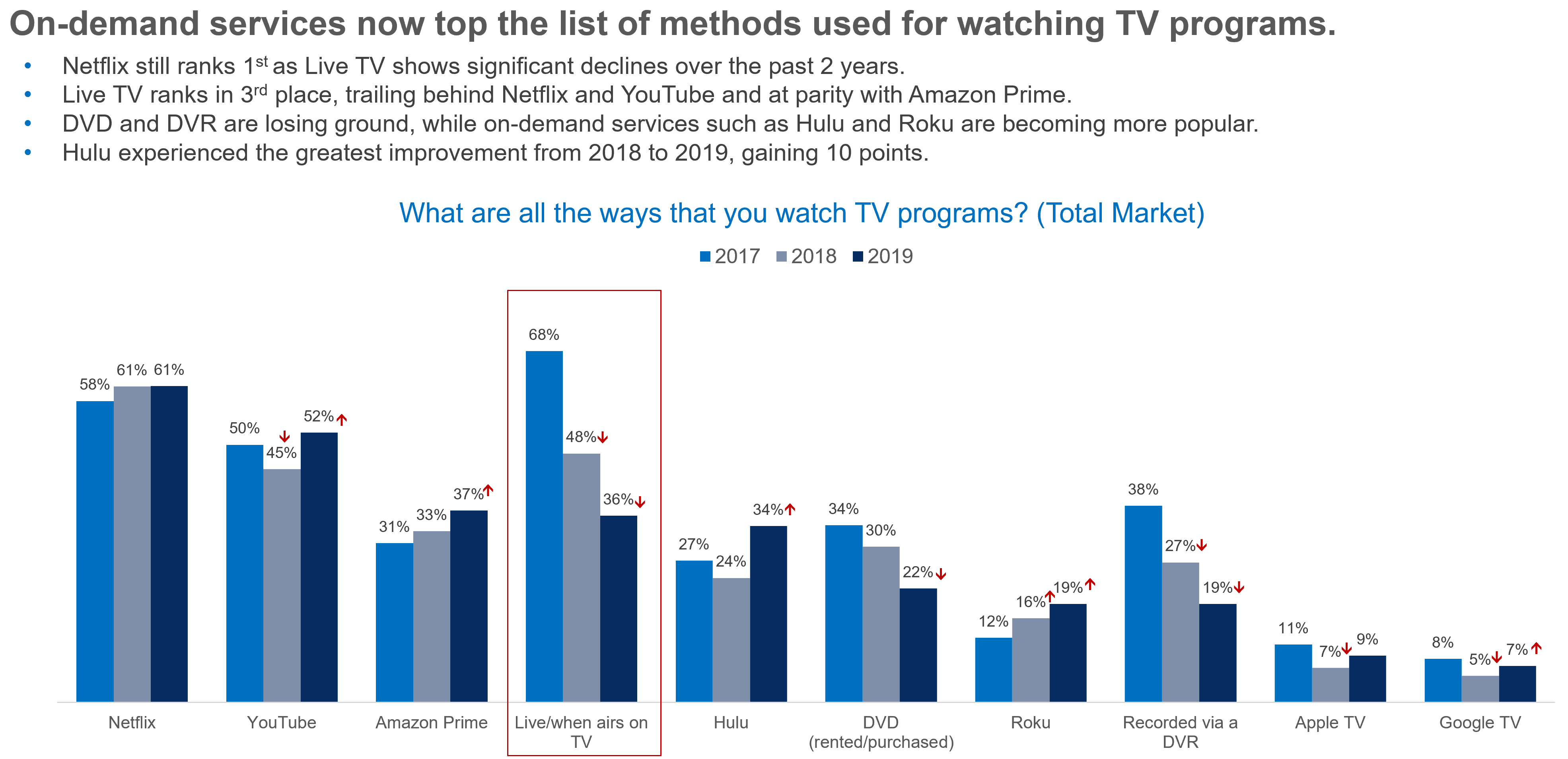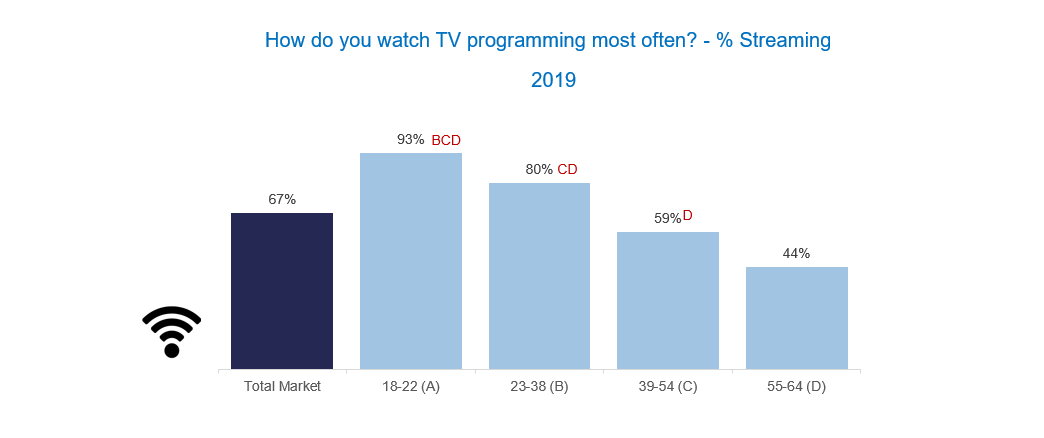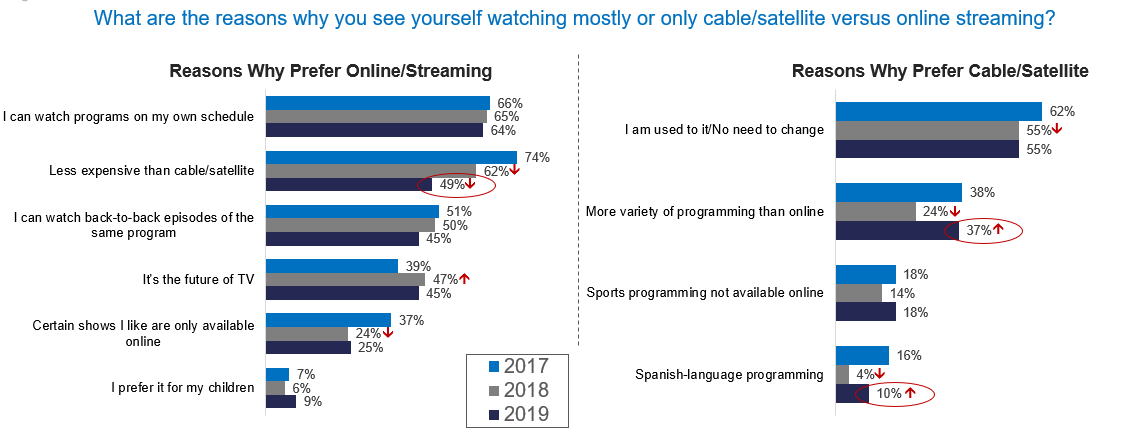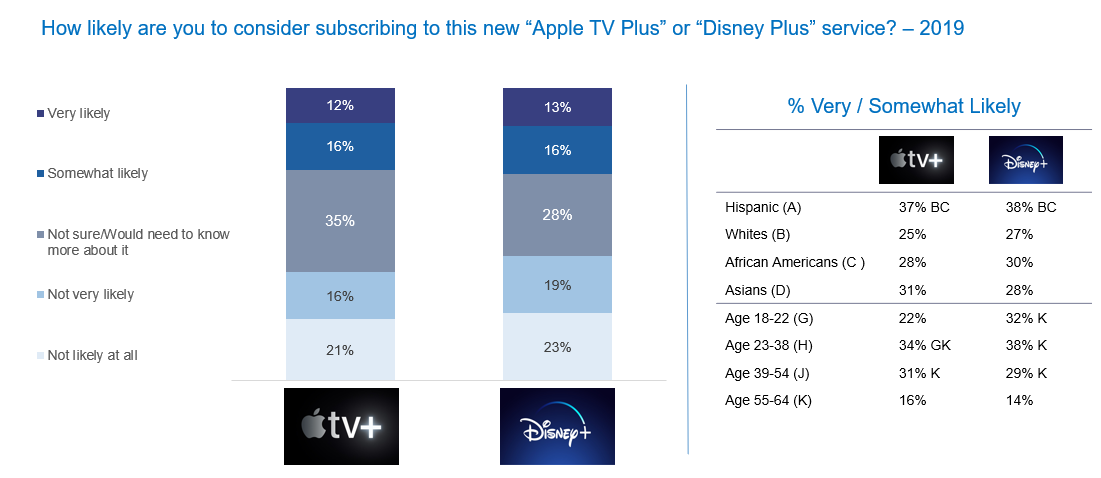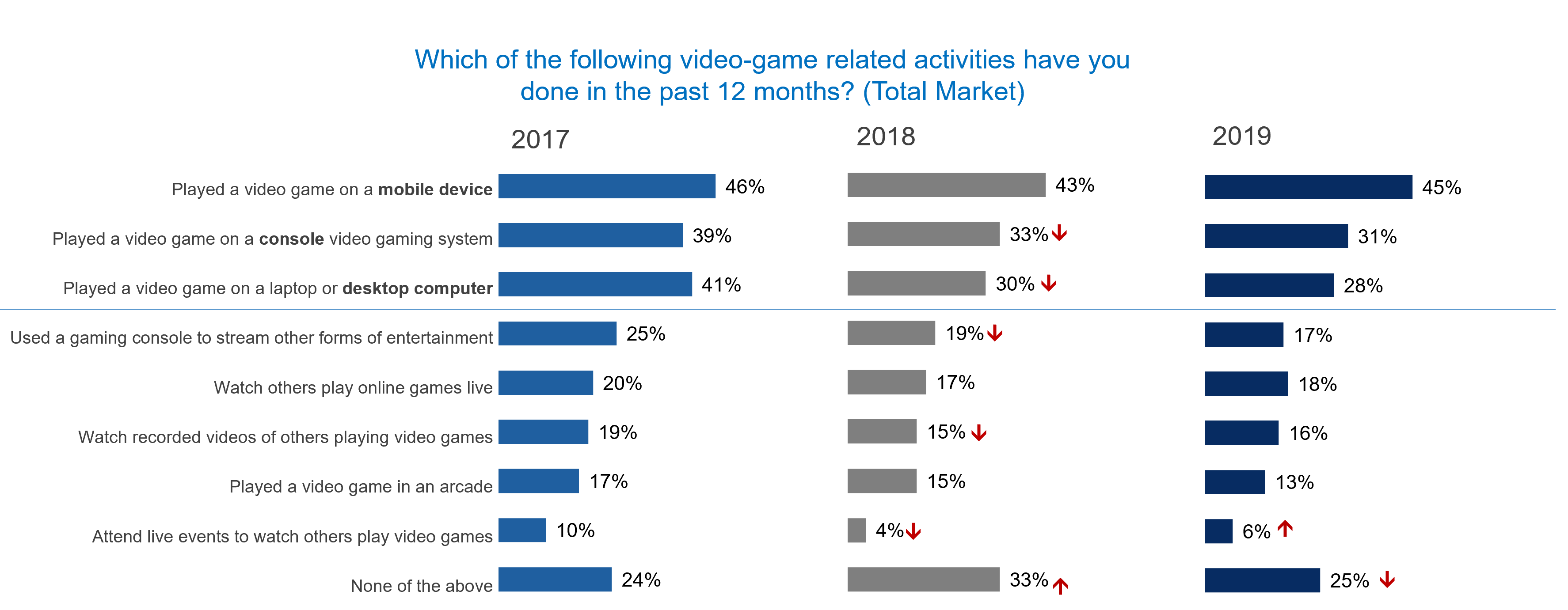Linear TV Viewership Drops Nearly 50% As Streaming Services Ramp Up In 2019
Despite losing subscribers for the first time in the past eight years, Netflix is still the preferred method used for watching TV programs among U.S. consumers, followed closely by YouTube. Preferred by 61% of consumers for the past two years, the streaming giant’s dominance hasn’t been marked so much by growth as it has been by the drastic decline of Live TV across 2017, 2018, and 2019. In a matter of 3 years, linear television went from 68% in viewership down to 36%.
In our latest report, ThinkNow Media™, we discuss the findings of our nationwide survey of consumers’ media consumption habits and attitudes on various platforms such as Live TV, streaming services, gaming, and social media. Get the full report here.
Not only did we find that Netflix is holding on to its title as the destination to watch TV programs, but other players, like Hulu, are making major moves to gain viewers as well. Hulu experienced the greatest improvement in viewership from 2018 to 2019 with a 10-point gain, likely driven by the success of their original programming like Handmaids Tale. We’ll likely see Hulu continue to climb as Disney just announced a Disney+ bundle that includes Hulu and ESPN+ for $12 a month set to launch in November.
Looking at viewing habits via ethnicity show some interesting differences. Netflix and YouTube are the most popular ways to watch TV programs, regardless of ethnicity. However, Hispanics and non-Hispanic Whites show a stronger preference for Netflix.
Hispanics are directionally the least likely to watch TV programs live and are the most likely to utilize streaming services such as Netflix and Hulu. This is likely driven by age as Hispanics are on average significantly younger than the general population.
Streaming age gap shows a big divide.
Looking at the data by age illustrates this point further. Virtually all of Gen Z (93%) report streaming as the primary way they watch TV programming most often. Conversely, the use of streaming services as the primary method for watching TV programming declines significantly with age.
Convenience driving the streaming trend.
So, what’s driving the shift to streaming? Convenience. Convenience continues to be the top reason for preferring streaming methods over cable or satellite. The only factor keeping cable/satellite in play at this point is a habit. Turning on the TV is second nature for older generations. Gen Z, on the other hand, was raised with connected devices. So, their viewing habits center around streaming content.
Cable/satellites continued investment in Spanish-language content, however, is paying off as Spanish-language programming was mentioned more often than a year ago, 10% vs. 4%. But is it enough to save cable subscriptions?
Another factor impacting cable/satellite is the availability of programming. DirectTV, for example, recently dropped CBS-owned stations in select markets after the network and AT&T failed to reach a new agreement. The biggest loser? Consumers as the pay for channels that have done dark. The solution for some, drop cable/satellite and stream the content when and where they please.
And as streaming services from well-known names like Apple come online later this year, the field gets even more crowded. Good for consumers but could spell disaster for linear TV and cable/satellite if these options live up to expectations.
Other forms of media steady but climbing.
Streaming isn’t the only media seeing an uptick in usage. Gaming and social media enjoy a dedicated following and have become increasingly mobile. Gaming on computers dropped from 41% in 2017 to just under 30% in 2019 and that number is expected to continue to decline as younger generations get online.
Social media users spend a little less than two and a half hours a day on social media. Most popular among younger generations, 40% of users ages 18-22 report being addicted to social media, 10 points higher than the general market.
Gen Y, however, is least trustful of brands on social media, and opt to use more private social media apps like WhatsApp to avoid being targeted by brands.
Conclusion
While we expect to continue to see a decline in Live TV consumption, it’s a long way from being dead. Clearly in decline, Live TV still enjoys a fair percentage of the total market. The proportion of households with no TV service has not changed since 2018, which means that the size of the share who does have a TV service hasn’t changed much either. They are just playing musical chairs with the services, trying to find the best seat to sit in. For marketers and content creators, that’s the challenge. How do you make your offering attractive without comprising content, infringing on privacy, or getting lost in an increasingly crowded field?
Got questions about ThinkNow Media™ and how to turn these insights into action? Reach out.
